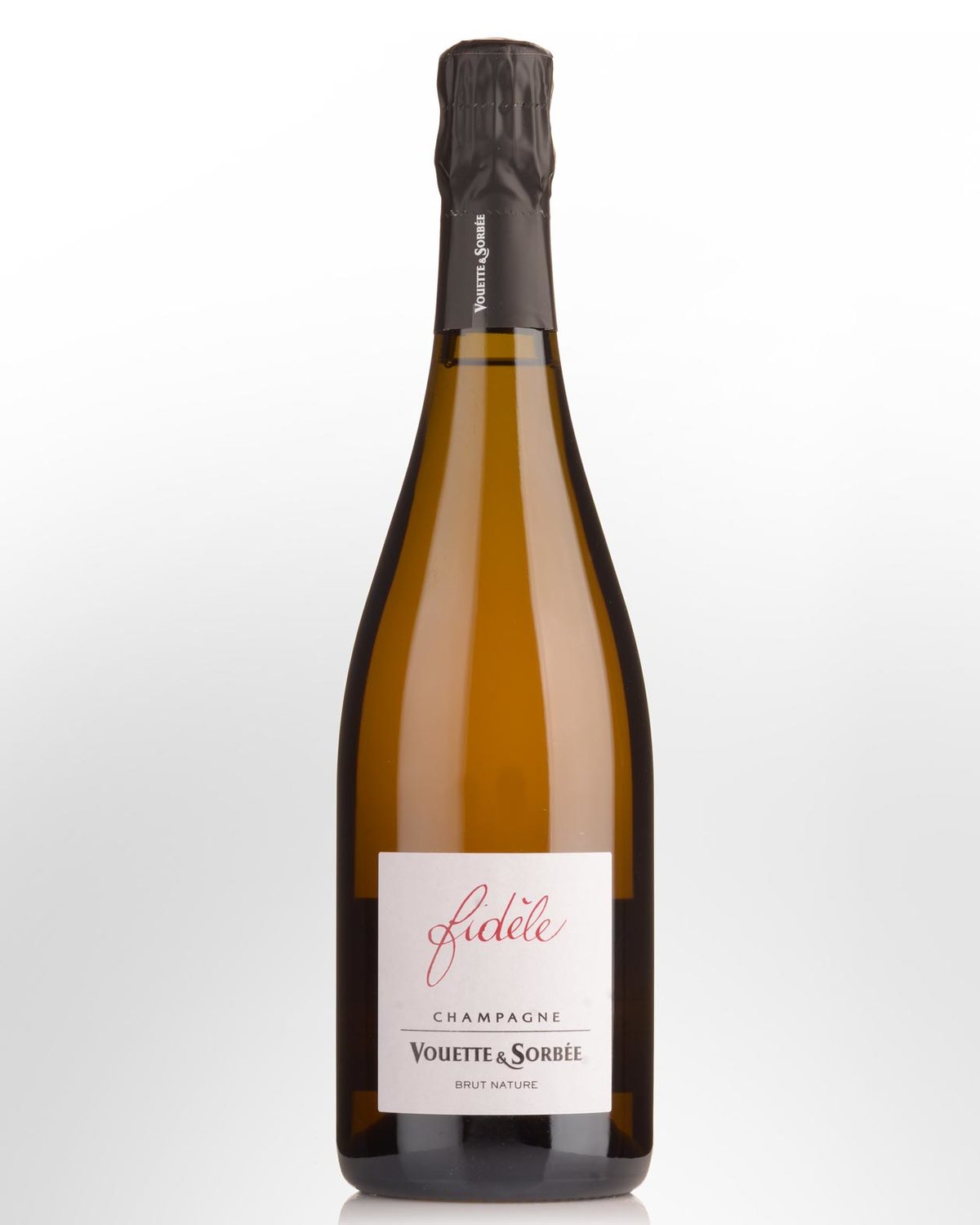
Vouette et Sorbee Fidele (R15) Champagne
Bertrand Gautherot has been quietly working away in the hamlet of Buxières-sur-Arce, in the Aube’s Côte des Bar region of Champagne, yet his wines have not escaped the attention of the top restaurants and retailers of the world. Each year Vouette & Sorbee allocations are eagerly awaited, and these exceptionally fine wines are consistently some of the best and most unique expressions from the area.
The vineyards here lie closer to Chablis than to Épernay, both in distance and geology, with soils dominated by the same Kimmeridgian limestone for which Chablis is famed. Gautherot’s wines take their deep and powerful personalities from these soils and the (relatively) sunnier climate of the southern Aube. His wines all come from a single harvest—noted by the “R” number on the back label—with the exception of the Fidèle cuvée, which sees a small addition of 5-10% reserve wine from a perpetual blend started in 2001. His winemaking abhors any kind of manipulation in the cellar. Gautherot uses the traditional Coquard press and the juice is transferred into oak or amphorae via gravity rather than being pumped. Primary fermentations are always carried out with natural yeasts and riddling and disgorgement are all done entirely by hand. The wines are bottled without fining or filtration and without dosage. The results are some of Champagne’s most original and delicious wines: wines of distinctive personality, energy and sense of place.
Fidele is 100% Pinot Noir grown on Kimmeridgian limestone soils. The Fonnet vineyard, located in a small, enclosed valley, provides the heart of this cuvée. Sorbée provides much of the balance, topped off by Châtel, a very rocky and limestone-rich vineyard with 20-plus-year-old Pinot Noir. Overall, the vine age for this wine averages 30 years. Following pressing in a traditional, vertical Coquard press, Fidele was vinified entirely without added yeast or chaptalisation, in used Burgundian barrels for 10 months (these barriques were purchased from Domaine Arnaud Ente in Meursault). The wine then spent 15-20 months on lees in bottle after secondary fermentation, and was disgorged with zero dosage.
to most of Australia
